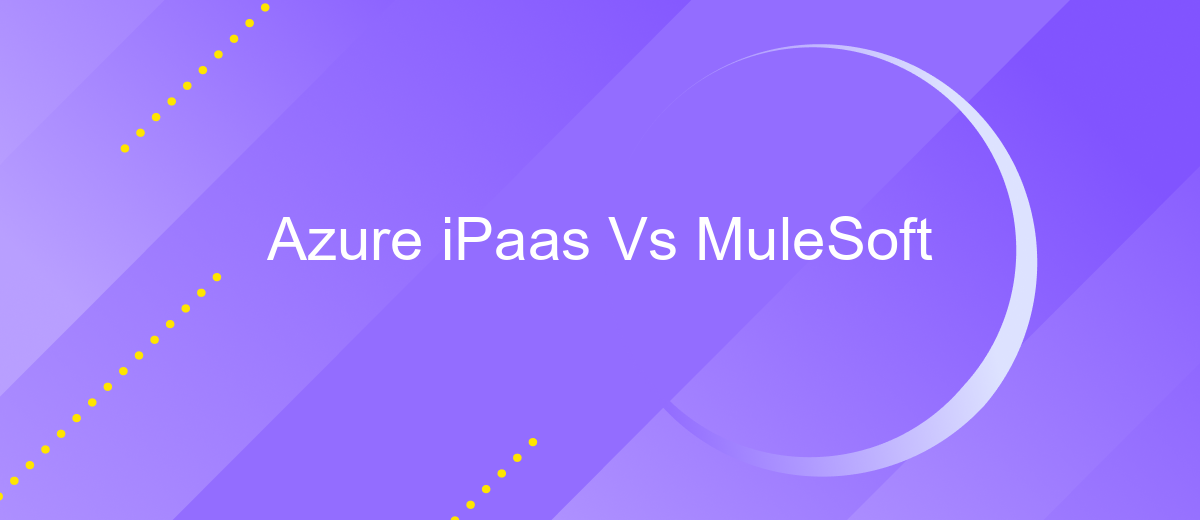Azure iPaas Vs MuleSoft
In today's rapidly evolving digital landscape, businesses require robust integration platforms to seamlessly connect diverse applications and services. This article compares two leading integration Platform as a Service (iPaaS) solutions: Microsoft Azure iPaaS and MuleSoft. We will explore their key features, strengths, and potential use cases to help you determine which platform best suits your organization's needs.
Introduction
In today's digital landscape, businesses are increasingly relying on integration platforms to streamline their operations and enhance connectivity between various applications. Azure iPaaS (Integration Platform as a Service) and MuleSoft are two prominent solutions that offer robust integration capabilities. Understanding the differences between these platforms can help organizations make informed decisions that align with their specific needs.
- Azure iPaaS offers seamless integration with Microsoft services and provides a scalable cloud-based environment.
- MuleSoft is known for its comprehensive API management and extensive support for various integration patterns.
- Both platforms enable businesses to automate workflows, enhance data sharing, and improve operational efficiency.
Choosing the right integration platform is crucial for optimizing business processes. While Azure iPaaS is ideal for enterprises heavily invested in the Microsoft ecosystem, MuleSoft's strength lies in its versatile API management. Additionally, services like ApiX-Drive can further simplify integration tasks, making it easier to connect diverse applications and automate workflows without extensive coding.
Key Features

Azure iPaaS offers a comprehensive suite of tools for seamless integration and automation. Key features include Azure Logic Apps, which allow users to create workflows that integrate apps, data, and services across enterprises. Azure Service Bus provides reliable messaging services, while Azure Event Grid ensures efficient event routing. Additionally, Azure API Management helps in publishing, managing, and securing APIs, making it easier for developers to expose their services.
MuleSoft, on the other hand, excels with its Anypoint Platform, which offers a unified solution for API management, design, and analytics. Key features include the Anypoint Exchange, a marketplace for connectors and templates, and the Anypoint Studio, an integrated development environment for building APIs and integrations. MuleSoft also supports a wide range of connectors, including ApiX-Drive, which facilitates the automation of data transfer between various applications and services, enhancing the overall integration process.
Benefits

When comparing Azure iPaaS and MuleSoft, it's essential to understand the unique benefits each platform offers. Both solutions provide robust tools for integrating various applications and services, but they cater to different needs and preferences.
- Scalability: Azure iPaaS is highly scalable, allowing businesses to handle increasing data volumes and user demands effortlessly.
- Flexibility: MuleSoft offers extensive flexibility with its Anypoint Platform, enabling seamless integration across on-premises and cloud environments.
- Cost Efficiency: Azure iPaaS often proves to be more cost-effective due to its pay-as-you-go pricing model, which can be advantageous for businesses of all sizes.
- Ease of Use: With platforms like ApiX-Drive, both Azure iPaaS and MuleSoft can simplify the integration process, making it easier for non-technical users to connect various applications.
- Security: Both platforms prioritize security, offering robust features to protect sensitive data during integration processes.
In conclusion, the choice between Azure iPaaS and MuleSoft depends on specific business needs, including scalability, flexibility, cost considerations, and ease of use. Leveraging tools like ApiX-Drive can further enhance the integration experience, ensuring seamless connectivity and efficient workflows across different systems.
Drawbacks

Both Azure iPaaS and MuleSoft offer robust integration solutions, but they come with their own set of drawbacks. Azure iPaaS, while deeply integrated with Microsoft's ecosystem, can be complex to set up and manage, especially for organizations not already familiar with Azure services. Additionally, the pricing structure can become quite costly as more services and resources are utilized.
MuleSoft, on the other hand, offers a comprehensive suite for API management and integration, but it also has its challenges. The platform can be overwhelming due to its extensive features and capabilities, requiring significant time and expertise to master. Furthermore, the licensing costs for MuleSoft can be prohibitive for smaller organizations.
- Complex setup and management for Azure iPaaS
- Potentially high costs for both Azure iPaaS and MuleSoft
- Steep learning curve for MuleSoft
For those seeking a more straightforward and cost-effective integration solution, services like ApiX-Drive can offer a viable alternative. ApiX-Drive simplifies the process of connecting various applications and automating workflows without the need for extensive technical knowledge, making it an attractive option for businesses of all sizes.
Use Cases
Azure iPaaS is ideal for organizations looking to leverage a comprehensive suite of cloud services for integrating applications, data, and processes. It excels in scenarios where enterprises need to connect various SaaS applications, on-premises systems, and cloud services seamlessly. For instance, companies can use Azure Logic Apps to automate workflows and Azure Service Bus for reliable messaging between different systems. This makes it a powerful tool for complex integration projects requiring scalability and robust security features.
On the other hand, MuleSoft is highly effective for businesses that need a versatile integration platform capable of connecting a wide range of applications and data sources. It is particularly useful for API-led connectivity, allowing developers to build reusable APIs that can be easily managed and monitored. Additionally, MuleSoft's Anypoint Platform provides tools for designing, deploying, and managing APIs, making it suitable for enterprises focusing on API-driven architectures. Services like ApiX-Drive can complement both Azure iPaaS and MuleSoft by offering simplified integration setups, enabling businesses to automate routine tasks and streamline workflows efficiently.
- Automate the work of an online store or landing
- Empower through integration
- Don't spend money on programmers and integrators
- Save time by automating routine tasks
FAQ
What are the primary differences between Azure iPaaS and MuleSoft?
Which platform is better for large-scale enterprise integrations?
How do Azure iPaaS and MuleSoft handle API management?
What are the cost considerations when choosing between Azure iPaaS and MuleSoft?
Are there tools available to help with the automation and integration of these platforms?
Apix-Drive is a universal tool that will quickly streamline any workflow, freeing you from routine and possible financial losses. Try ApiX-Drive in action and see how useful it is for you personally. In the meantime, when you are setting up connections between systems, think about where you are investing your free time, because now you will have much more of it.


